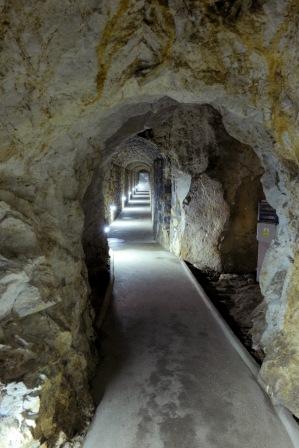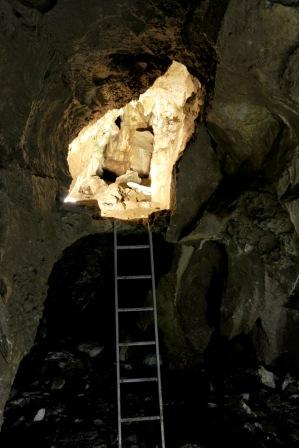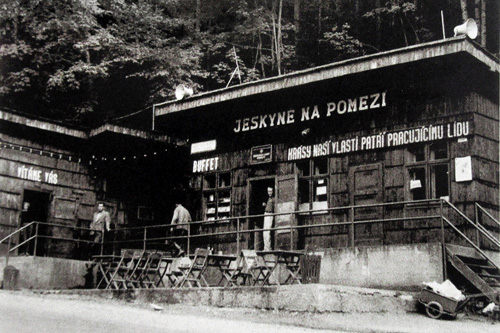Na Pomezí Caves - history

HISTORY OF DISCOVERIES AND OPENING UP OF THE CAVES
The Na Pomezí Caves karst phenomena have been known about since the very beginning of the marble mining activity in the mines under the Na Pomezí saddle (576 m a.s.l.). Cavities and fissure chimneys were often found while mining. In the summer of 1936, while blasting rock in one of the mines, the workers uncovered an entrance into an unusually extensive three-floor cave, with the lower floor lying 60 metres under the ground. It was explored but left unprotected against vandals. The beautiful stalactite and stalagmite decoration was largely destroyed. Today it is called the Rasovna Cave. In the 1930s, the karst cavities were sometimes uncovered too in the former Havranek’s mine. The first areas of the Na Pomezí Caves discovered are evidenced by the signature “Kurt Höhle” on the wall of Bahenní dóm (Mud Dome), dated 21 October 1937. We know nothing else of this period and even this date is still being discussed. The new border inhabitants became interested in research works only after 1945. Within the Department of Tourism of Sokol Jeseník, a speleological research group was formed under the leadership of Karel Všetička. Smaller caves called Komínová (Chimney Cave), Netopýrka and Liščí díra (Fox Hole) in the Na Pomezí Caves were gradually discovered.
On 28 August 1949, after they had widened a small hole under the cliff of Havránek’s deserted mine, the explorers entered through a narrow chimney into the first premises of the Na Pomezí Caves. When removing a layer of mud, they discovered a signature on the wall that read “Kurt Höhle” and during a short period of time they uncovered basically the whole cave system as it is known today. In October 1949, the ONV (District People's Committee) Jeseník established a municipal corporation that was in charge of the Na Špičáku Cave and other newly discovered caves. They made the first 130-metre-long part of the Na Pomezí Caves available to the public as early as on 16 May 1950. In 1951 the caves became part of the North-Moravian Karst Society in Olomouc; together they then became part of the Čedok n.p. (national enterprise) in 1952 and subsequently they joined the Turista n.p.

Two tunnels as well as today’s entrance to and exit from the cave were broken through by the project of V. Panoš in the years 1954–1955 and simultaneously subsections of the cave route were interconnected into today's integrated guided tour. The new route with concrete pavements and electric lights was opened at the beginning of the summer season in 1955. The Regional Homeland Studies Institute in Olomouc was in charge of the caves in the following years. The State Nature Conservation Centre took over the caves in 1990 and since 2006 the caves have been taken care of by its agency – the Cave Administration of the Czech Republic.
In the years 2004–2005, a complete reconstruction of the route and electrical installation was done, during which unwanted stockpiles and backfills from the previous excavation works were removed, whereas some areas and quiet corners for visitors to admire were rediscovered. Old iron railings and constructions were replaced by non-corrosive materials, the caves are better protected against floods and the cave premises and sceneries are now lit more sensitively. The last arrangement raised the level of the cave route from the aesthetic and technical points of view.
